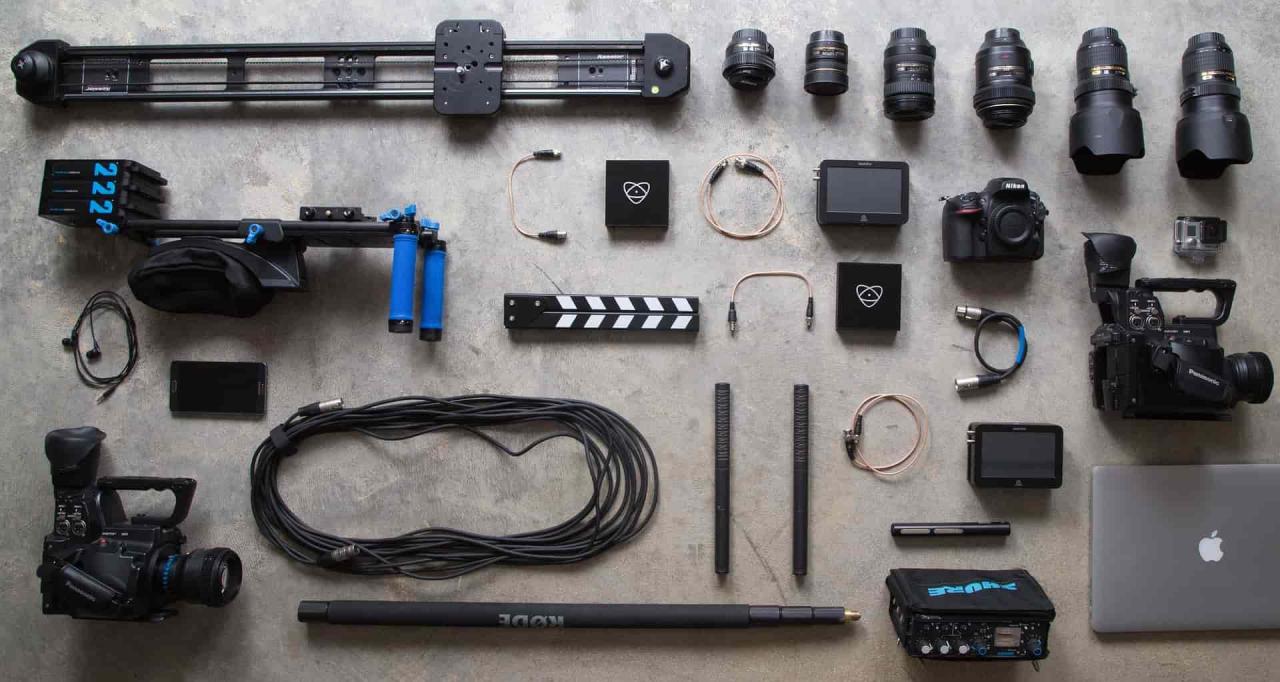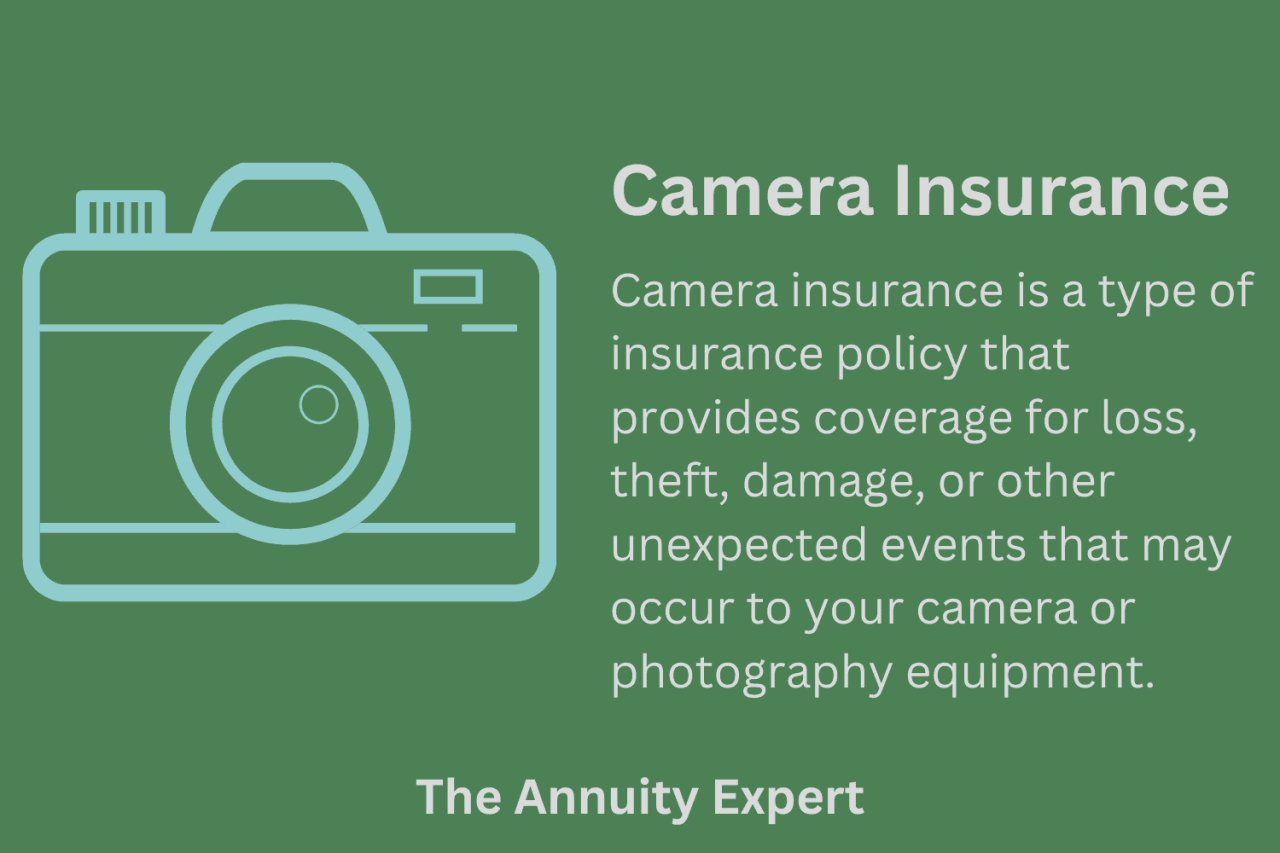Camera insurance, a vital safeguard for your cherished photographic equipment, provides financial protection against unforeseen events. Whether you’re a seasoned professional or a passionate hobbyist, the right camera insurance policy can offer peace of mind, knowing your investment is secured against damage, theft, or loss.
Understanding the nuances of camera insurance, from policy features to claim processes, empowers you to make informed decisions that align with your specific needs and budget. By exploring the various options available, you can find the coverage that best suits your photographic endeavors and ensure the longevity of your precious equipment.
Key Features of Camera Insurance Policies

Camera insurance provides financial protection against unexpected events that could damage or destroy your valuable photography equipment. Understanding the key features of these policies can help you make an informed decision about your coverage needs.
Coverage Elements, Camera insurance
Camera insurance policies typically cover a range of risks, including:
- Accidental Damage: This covers damage caused by accidental drops, spills, or other unforeseen incidents.
- Theft: Protection against the loss of your camera and equipment due to theft, including burglary or robbery.
- Natural Disasters: Coverage for damage caused by natural disasters such as floods, earthquakes, or hurricanes.
- Malfunctions: Some policies may cover damage caused by mechanical or electrical failures in your equipment.
- Loss of Use: This coverage provides reimbursement for the cost of renting replacement equipment while your damaged or stolen camera is being repaired or replaced.
Policy Features and Benefits
Here’s a breakdown of different policy features and benefits:
- Deductible: This is the amount you pay out-of-pocket before the insurance company starts covering the cost of repairs or replacement. Higher deductibles typically lead to lower premiums.
- Coverage Limits: Policies often have coverage limits, which determine the maximum amount the insurer will pay for any single claim.
- Replacement Value: Some policies offer replacement value coverage, which pays the full cost of replacing your equipment with a new model of equivalent value.
- Actual Cash Value: Other policies provide actual cash value coverage, which pays the depreciated value of your equipment, meaning you’ll receive less than the original purchase price.
- Coverage for Accessories: Some policies extend coverage to accessories such as lenses, tripods, and camera bags.
Understanding Policy Terms and Conditions
It’s crucial to thoroughly understand the terms and conditions of your camera insurance policy before purchasing it. Pay close attention to:
- Exclusions: Understand what events or situations are not covered by the policy, such as pre-existing conditions or damage caused by wear and tear.
- Waiting Periods: Some policies have waiting periods before certain types of coverage become effective.
- Claim Process: Familiarize yourself with the process for filing a claim, including the required documentation and deadlines.
- Cancellation Policy: Understand the terms for canceling the policy and any associated fees or penalties.
Factors Affecting Camera Insurance Premiums
Camera insurance premiums are influenced by various factors that determine the level of risk associated with insuring your equipment. Understanding these factors can help you make informed decisions when choosing a policy and potentially save money on your premiums.
Camera Type and Value
The type and value of your camera are significant factors influencing your premium. More expensive cameras, especially those with specialized features, carry higher premiums. For example, a professional-grade DSLR with high-end lenses will likely have a higher premium than a basic point-and-shoot camera. This is because the potential cost of replacement or repair for a more expensive camera is significantly higher.
Case Studies of Camera Insurance Claims

Camera insurance can provide peace of mind for photographers and videographers, protecting their valuable equipment from unforeseen events. Examining real-life claims can offer insights into the benefits and limitations of such policies.
Successful Camera Insurance Claims
These case studies illustrate the potential benefits of camera insurance, highlighting situations where it provided financial protection for photographers:
- A professional photographer’s camera was stolen from their car during a travel assignment. Their insurance policy covered the cost of replacing the camera and lenses, allowing them to continue their work without significant financial burden.
- A videographer’s drone was damaged during a filming session due to a sudden gust of wind. The insurance claim covered the repair costs, enabling them to complete their project on schedule.
- A photographer’s camera was accidentally dropped and damaged while shooting a wedding. The insurance claim covered the repair costs, ensuring the photographer could fulfill their professional obligations.
Factors Influencing Claim Outcomes
The success of a camera insurance claim can depend on various factors:
- Policy Coverage: The specific terms and conditions of the insurance policy, including the coverage limits and exclusions, play a crucial role in determining the claim outcome. It is essential to carefully review the policy document to understand what is covered and what is not.
- Documentation: Providing sufficient documentation, such as purchase receipts, repair estimates, and police reports, can significantly strengthen a claim. Adequate documentation helps the insurer verify the claim and expedite the process.
- Claim Procedure: Following the insurer’s claim procedure is crucial. This involves notifying the insurer promptly, providing the required documentation, and cooperating with the insurer’s investigation.
Customer Experiences with Camera Insurance
Customer feedback provides valuable insights into the real-world experiences with camera insurance:
- Positive Experiences: Many photographers and videographers have reported positive experiences with camera insurance, praising the timely and efficient claim processing, the coverage provided, and the peace of mind it offers.
- Negative Experiences: Some customers have reported challenges with claim processing, including delays, denials, or disputes over coverage. These experiences highlight the importance of carefully selecting an insurer with a strong reputation for customer service and claim handling.
Final Conclusion
Navigating the world of camera insurance requires careful consideration of your individual needs, budget, and the level of protection you desire. With a thorough understanding of the different policies, features, and claim processes, you can confidently choose the insurance that best safeguards your valuable photographic equipment. Remember, investing in camera insurance is an investment in the future of your photographic journey, ensuring you can continue to capture memories and create stunning images for years to come.
Camera insurance can be a lifesaver for photographers, protecting your gear from accidents and theft. If you’re looking for a reliable and affordable option, consider calling Progressive insurance to discuss their coverage options. They might have a policy that fits your needs and helps you keep your photography business running smoothly.

